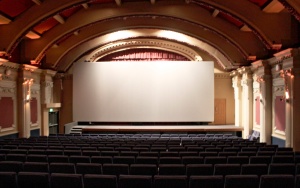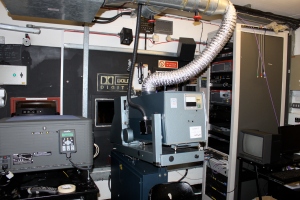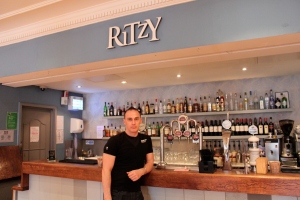To mark the Ritzy cinema’s 100th birthday, Kaye Wiggins went behind the scenes with general manager, Rob Belfield
It’s hard to imagine the Ritzy on its opening night in 1911. The cinema, then called the Electric Pavilion, would have been more imposing than it is today: the main auditorium, which now seats 350, had 780 seats.
But it is not known what the cinema’s first visitors would have watched. Rob Belfield, general manager of the Ritzy, says he has tried to find the name of first film shown at the cinema, but could not uncover any evidence.
“There are records to show it was opened by the mayor of Lambeth, but unfortunately they don’t say which film was on,” he says.As he shows me around the cinema – early one morning, when it’s eerily quiet – Rob paints a picture of how it would have looked 100 years ago.
“Where you’ve just come in, at the main entrance by the ticket desks, wasn’t part of the cinema,” he says. “It was the Brixton Theatre, which was bombed in the Blitz. After that it was used as a car park for the library, until 1994 when it became part of the Ritzy.
“The bit that’s now the restaurant would have been the box office, and the main auditorium would have stretched right back to where the bar is now.”
We head to the projection room above the main auditorium, a tiny room crammed with equipment. There is still an old film projector, although almost all of the films are screened from a neat digital box. “We’ve kept the film projector, but we don’t use it very often,” Rob says. “Now and again there’ll be a local filmmaker who will want to use it for a special screening.”
Below us, in the main auditorium, is a brand-new screen that can show 3D films and was installed just last month. There’s one problem with it, though. Because it is twice the size of the previous screen, it is too big to fit behind the cinema’s curtains.
“We had to stop the routine of pulling the curtains back at the start of a film,” Rob says. “There’s not much we can do about that. We still try to build anticipation in other ways, like dimming the lights.”
As we head downstairs for a closer look at the main auditorium, the history lesson continues. “The cinema nearly closed for good in the 1970s,” Rob says. “It was closed for two or three years and was becoming derelict, and the council was going to turn the whole area into a shopping centre.
“But a group of four local residents invested £10,000 in the cinema. They must have scrimped, saved and borrowed to do it, but they turned it around and it was reopened in 1974.”
Rob says the Ritzy has become more populist in recent years, showing blockbusters that it might previously have shunned. “We’ve definitely moved from arthouse to a more mainstream cinema now, because it’s what the community wants,” he says. “When the new Harry Potter film is out and you’re not showing it, you’re not in tune with people.”
Despite the Ritzy’s local, individual, independent feel, 95 per cent of the films shown are chosen by the head office of Picturehouse, the national chain that owns the Ritzy and 18 other cinemas across the UK.
Rob insists, however, that he tries to give locals what they want, and often receives letters requesting certain films be screened. “I’ll always try to meet people’s requests,” he says.
And he is convinced that the Ritzy will not be taken over by a bigger cinema chain, or abandon the world cinema and small film screenings that set it apart. “We’ve got more than 10,000 members and they’re loyal, committed people who have strong opinions,” he says. “They’d be up in arms if the Ritzy became just like all the other cinemas.”
A tip – if you have a choice of screen, pick screen 5. It has plush new reclining seats and wine tables, but the tickets are the same price as all the others.













